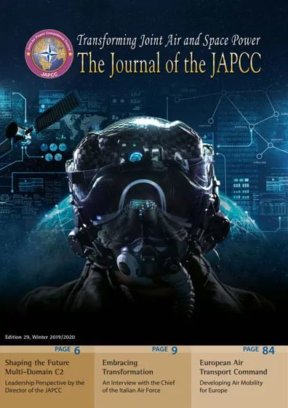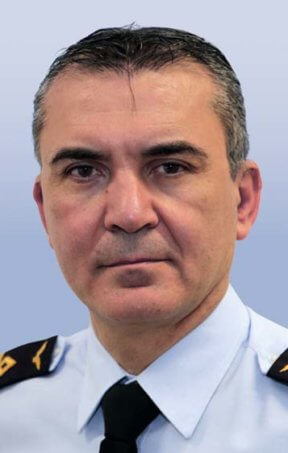Introduction
When the European Air Transport Command (EATC) was established in 2010, it was the most suitable solution for some European nations in search of a trustworthy and flexible solution to optimize the use of scarce air transport resources and to face harsh operational challenges. Since then, EATC evolved quickly, growing from the initial four founding nations to the current seven-member nations. EATC has certainly become the major provider of military-air transport in Europe. The realization that the combination of national assets in this respect would form such a successful unit was most welcome. Pool and sharing of air transport capacities, operational experience and expertise, as well as the technical know-how, was the key to success. This formula allows EATC to effectively use the transferred national fleets. Additionally it supports the integration of different systems and capabilities into the EATC fleet and currently the most effective integration of the new-generation air-transport capabilities such as the A400M or the A330 MRTT.
What is the Added Value of EATC?
In the last decade, the rapid deployment of troops or the rapid delivery of goods over long distances in time-sensitive operations was decisive to the success of these operations. Air mobility is a key factor in swift military power projection and is becoming increasingly important in today’s security environment. The fact that the smart use of airlift assets can accelerate the crisis-to-employment timelines overcoming any geographical or distance challenge, places a fundamental premium on the mobility-airlift system. This simple statement gives an idea of the operational, if not strategic, relevance of air transport for each one of the EATC member nations and a clear idea of what these same nations decided to forge together. The payback from the venture EATC to the member nations was beyond expectations.
What Does EATC Offer that a National Alternative Would Not?
Despite many challenges from somewhat elderly fleets to a new generation transport fleet, the operational record of EATC is impressive. With an assigned fleet totalling about 170 transport airframes of all sizes and 23 different types, EATC commands and controls between 8,500 and 9,500 missions per year. EATC effectively supports its member nations’ military transport needs within Europe and overseas. The support provided during the execution phases of major operations in Barkhane, Resolute Support Mission, Minusma and Counter Daesh are merely a few examples.
In a multinational framework like EATC, managing air mobility missions is complex and complicated. EATC covers the entire package of the air mobility strands of work. This includes: managing multinational requests, coordinating diplomatic clearances and optimizing the use of a high number of different aircraft types. But it is also taking into account EATC, international and national military regulations. Despite many challenges, EATC has proven to be actually able to quickly and effectively deploy and redeploy forces anywhere in the world. This ability is the essence of the air mobility actors. This is EATC!
However, in a multinational setting the capability to deploy effectively and efficiently requires more than a high level of hardware, skills and preparation. If the nations wish to act together, they also need a common understanding of the air mobility business. In technical terms, this means an adaptation of common Tactics, Technics and Procedures (TTP), multinational training and a common military operational culture. To that end, EATC is striving to refine the spectrum of common standards. We advocate for partnership capacity training programmes in various domains (multinational ground handling school, cross-maintenance framework, A400M package leader course). This cooperative effort does not only include EATC member nations, but also other European Union (EU) member states and North Atlantic Treaty Organization (NATO) allies. The operational success is dependent on common standards and multinational training. This improves the ability to conduct day-to-day operations in joint and coalition environments. And this is what EATC excels in!
In short why EATC is so important? Because military and operational success often depends on the ‘how much’ and the ‘how quickly’, on pooling and sharing of assets and capabilities. EATC is a lighthouse project in terms of true multinational cooperation and integration in military air mobility!
What does EATC offer to our member nations that a national alternative would not offer? Reduction in financial, organizational and human resources, a readily available means to overcome national capability shortfalls, reduction of the logistical footprint, efficient air mobility solutions, and inherent flexibility are just a few examples.
How Does EATC Raise the Stakes of Air Mobility in Future?
The EATC is already in the process of a major renewal and growth of the assigned fleet and a much larger capability portfolio will be available in the future. By 2025, the EATC nations will be the main providers in Europe of a modern transport fleet with more than 100 A400M, 30 C130J, and more than 20 A330 Multi Role Tanker Transport (MRTT) and KC-767. In particular, the expected availability of this amount of A400Ms will greatly enhance EATC’s overall strategic and tactical capabilities. In fact, EATC will have an unprecedented capacity to carry out extensive operations even on unpaved airstrips, carrying, in a single asset, up to 37 tons of payload which may include armoured combat vehicles, self-propelled artillery, support vehicles or helicopters. The entering into service of these new platforms and the planned acquisition of greater capacities brings along a larger spectrum of options, as well as additional conceptual challenges and opportunities. Harmonizing technical provisions, operational procedures and employment solutions will be key for an effective pooling and sharing of these new significant capabilities. EATC intends to harmonize and standardize the employment of these new aircraft. It is a holistic and wide-ranging approach where a mere standardization of the operational TTPs will not be sufficient. Technical solutions adopted aboard the aircraft, aircrew manuals and training, and engineers’ and ground handlers’ procedures should also be standardized. The challenge is significant. A firm commitment and support from all the parties involved (member nations’ air forces, affected industries and concerned organizations) will be required.
From an operational perspective, the availability of a larger fleet and a more capable aircraft in the next few years will offer great opportunities and increased efficiency. The objective is evident, however, at the moment, given the resources available and the existing constraints, EATC manages to satisfy the member nations’ basic operational needs. Moving forward we seek to be able to operate more cost-effectively. EATC has worked out an intriguing but audacious idea to tackle efficiency. The established modus operandi foresees that EATC is only acting when an air transport mission has been requested. EATC, however, assumes a more proactive stance and intends to set up pre-scheduled regular cargo flights to the most common destinations or to support an ongoing operation.
This is known as the ‘shuttle system’. The development of the concept started in September 2017, but was delayed due to the low availability of airframes and extensive limitations. With the new capabilities becoming available, this system can be significantly improved. It will be made more reliable, more robust and even … more multinational. The final goal will be to set up a worldwide transport network. Selected big logistical hubs in the member nations will be connected to each other and will be linked through regular multinational cargo flights with the most critical destinations around the world. This requires adaptive rules and regulations, increased freedom of movement and higher flexibility. However, the gain this option would offer in terms of improved pooling and sharing and therefore better efficiency is huge and worth the effort.
The idea is the so-called ‘smart co-basing concept’. It is a planned network of permanent and temporary bases (flexible system). Cargo will be routinely transported through the EATC air network, while air and ground combat units are moved over global distances in a matter of a few days or even hours. Indeed, the execution of integrated operations requires a joint force capable of swift force projection around the world relying upon a global logistics and transportation network. This means that, without air mobility, all strategic, operational, tactical and logistical concepts may be at risk. On the other hand, if military air logisticians expect a higher degree of flexibility in Air Power when it comes to rapid movement requirements for contingency operations, natural disaster relief deployments or medical evacuations, the EATC is already in the process of developing such a network to fulfil this requirement.
Future developments and future challenges, another relevant aspect, will impact the widespread introduction of modern communications and sensor technology throughout the air forces. The developing communication environment has fully encompassed the EATC transferred fleet by including, for instance, Satellite Communications (SATCOM). EATC’s command and control processes will evolve and require quick and effective adaptation to new technologies. Simultaneously, the realistic aircrew training will definitively shift towards a digitized battlefield. EATC subject matter experts are already tackling the subject and the opportunities for the EATC to grasp.
Looking ahead and considering the new data flow management environment, EATC member nations connect to a single EATC operational cloud envisaging a higher level of information sharing. In turn, this achievement actually brings remarkable operational gains. Considering that the new platforms, like the A330 MRTT and the A400M are not just multi-role, but indeed multi-mission assets designed to globally support a multi-mission air and joint force, one may only imagine the importance that a shared mission management data system guarantees in terms of flexibility. The multi-role and multi-mission capabilities of these aircraft offer, by definition, various airlift options for supporting ground manoeuvres or forward air bases and airfields. They can provide, almost simultaneously, aeromedical evacuation capability, intra-theatre tactical airlift or inter-theatre strategic flight and air-to-air refuelling options. In light of this, effective integration, coordination and synchronization of inter-theatre and intra-theatre air-mobility operations becomes a new crucial capability. Swift transfer of tactical control or the ability to redirect an A400M to an air-refuelling area, where unexpected tactical support is needed, will be key requirements for exploiting the full potential of the new platforms.
Conclusion
Anticipating a tough and uncertain security landscape, air mobility is and will remain a critical future pillar of air and military power. Large-scale, theatre-to-theatre movements are to be considered as an integral and unavoidable part of the planning process and need to be approached in a comprehensive manner. A high level of preparation, integration and common understanding will be a basic requirement to deliver the right effects, at the right place and at the right time in a synchronized, connected and multinational environment.
From its inception, less than ten years ago, the EATC has quickly become a catalyst for Air Power in the spectrum of air mobility. Today, it is a major actor in Europe and it will become the main air mobility provider within the next decade. Currently at the service of seven-member nations, the EATC will continue to develop its ability to cooperate together, to foster interoperability and to set up a more reliable and robust operational mechanisms together with more proactive and responsive command and control options.
The current status is good, but the future looks absolutely bright. EATC will keep on building a common understanding of what is at stake and what great opportunities lie ahead. EATC will generate within Europe a true common operational culture.












